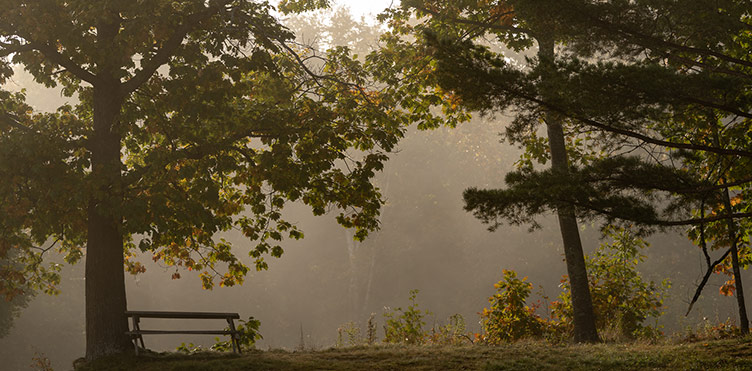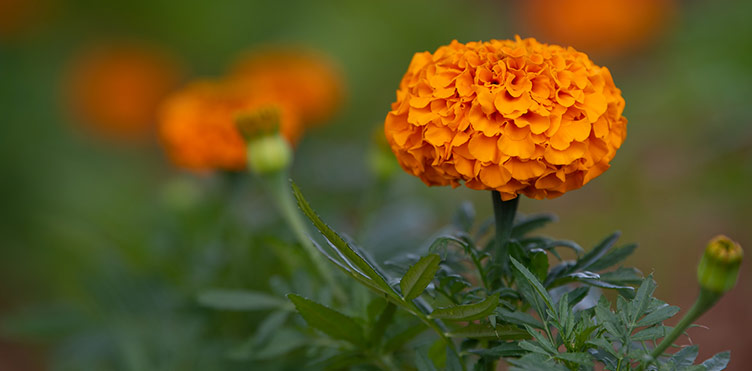Wrapping up

Conservation is the protection and preservation of biodiversity through management and the mitigation of threats. It is the primary tool we have to avoid the negative effects of biodiversity loss.
Conservation requires:
- Sustainable policy, resource management and production levels
- Mindful, planned development
- Reduction and careful disposal of pollutants
- Invasive species prevention and removal
- Remediation of damaged ecosystems
Explore conservation efforts in New Brunswick:
- Government of NB: Forest conservation
- Ducks Unlimited Canada: New Brunswick
- Nature Conservancy: Bur oak forest at the Keyhole
- Nature Trust: Furbish's Lousewort on the edge
If you're a UNB student completing this module for coursework, be sure to complete the reflection section as part of your requirements.
Conclusion

In this module, you learned about the value and importance of biodiversity, including its connections to the United Nations Sustainability Development Goals. We explored what ecosystem services are and their importance.
We also looked at some common threats to biodiversity and why it is important that we mitigate these threats through conservation, along with some ways you can support biodiversity conservation in New Brunswick. You also had an opportunity to reflect on how biodiversity and conservation intersect with your own life.
Call to action
There are many ways to help protect biodiversity, and preventative measures that you can take to minimize your negative impact.
Plant native species
There are many ways to support local ecosystem health with thoughtfully placed gardens. Here are some examples:
- Pollinator garden: Pollinators are animals which transfer pollen between plants. They are essential for the reproduction of many species, including food crops. Pollinator gardens provide pesticide-free native plants to provide resources to animals, who in turn provide resources to us.
- Rain garden: a rain garden is landscaped to form a basin, designed to retain stormwater. Not only is this a great home for water-loving plants, it helps to capture harmful chemicals that may otherwise flow into aquatic and marine ecosystems.
- Reforestation: Reducing manicured lawns in favor of forests has many ecosystem benefits. Trees sequester more carbon, produce more breathable oxygen, and hold soil and water in place better than grass. Forests provide habitat to many New Brunswick species.
Prevent the spread of invasive species
- Ensure swimwear, boats, and other items which entered a body of water are appropriately clean before entering a separate body of water to prevent the spread of harmful aquatic species. Likewise for land-based activities, clean your shoes, clothes, pets and equipment before traveling.
- Buy and burn firewood local to the area that you are in. Moving wood risks spreading invasive forest pests across the province.
- Keep cats indoors and never release pets (fish, turtles, rabbits, etc.) into the wild. Surrender unwanted animals to shelters or local interest groups.
- Remove and safely dispose of invasive plants. Be sure to learn the proper procedure to avoid unintentionally spreading the plant further or injuring yourself. Giant Hogweed, a common invasive species in New Brunswick, can leave chemical burns.
Get involved
- Get involved with environmental organizations to participate in conservation activities. Various environmental, wildlife and watershed non-profits offer volunteer programs or membership.
- Organize a clean-up to remove litter from the environment.
- Participate in citizen science. Learn to identify species, and report sightings to specialized online databases which help researchers track things such as species distribution and ecosystem conditions.
Environmental organizations involved in conservation in New Brunswick
- Canadian Council on Invasive Species
- Government of Canada Citizen Science Portal
- CPAWS New Brunswick
- Conservation Council NB
- IUCN Red List of Endangered Species
- Nature Conservancy of Canada
- Nature Trust of New Brunswick
- The Nashwaak Watershed Association
- NB Plants for Pollinators
- NB Environmental Network
- NB Invasive Species Council
- WWF Campus: Living Planet Leader
Resources
Learn more
- The National Wildlife Federation – Ecosystem Services
- Earthwise Aware – What are Ecosystem Services?
- Earth.Org – What are Ecosystem Services?
- NatureScot: Scotland’s Nature Agency – What are Ecosystem Services?
- EPA – Ecosystem Services Research
- Food and Agriculture Organization of the United Nations – Ecosystem Services & Biodiversity (ESB)
- Canadian Wildlife Federation – What’s an Ecosystem?
- UNECE – Ecosystem Services
- United Nations Development Programme – Promoting Sustainable Livelihoods, Reducing Vulnerability and Building Resilience in the Drylands
- Biodiversity (nationalgeographic.org)
- Global Biodiversity (nationalgeographic.org)
- Types of Ecology (nationalgeographic.org)
- Conserving Earth (nationalgeographic.org)
- Ecology (nationalgeographic.org)
- Impact of an invasive species
- Symbiosis: The art of living together
- Conservation and sustainable use of biodiversity | UNESCO
- Biodiversity and ecosystems | Department of Economic and Social Affairs (un.org)
- Biodiversity: our solutions are in nature (unep.org)
- Sciences - Toolkit for the Interdisciplinary Infusion of the SDGs into Classrooms (yorku.ca)
- Invasive Species in NB profiles
Academic resources
- Jacobsen, SE., Sørensen, M., Pedersen, S.M. et al. (2013). Feeding the world: genetically modified crops versus agricultural biodiversity. Agronomy for Sustainable Development, 33, 651–662.
- Lindenmeyer, D.B. and J.F. Franklin. (2002). Conserving Forest Biodiversity: A Comprehensive Multiscaled Approach. Island Press.
- Walker, S., J.B. Wilson, J.B. Steel, G.L., et al. (2003). Properties of ecotones objectivelydetermined from a coastal vegetation gradient. Journal of Vegetation Science, 14(4), 579-590.
This work is licensed under a Creative Commons Attribution-NonCommercial 4.0 International License.

